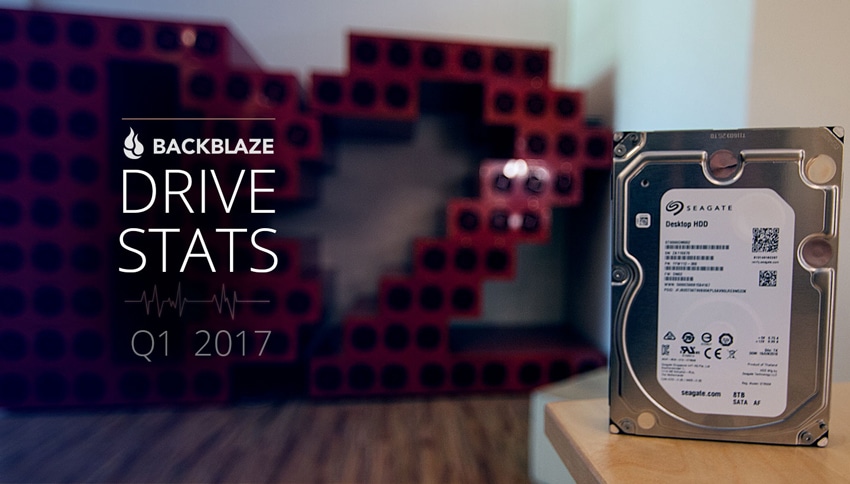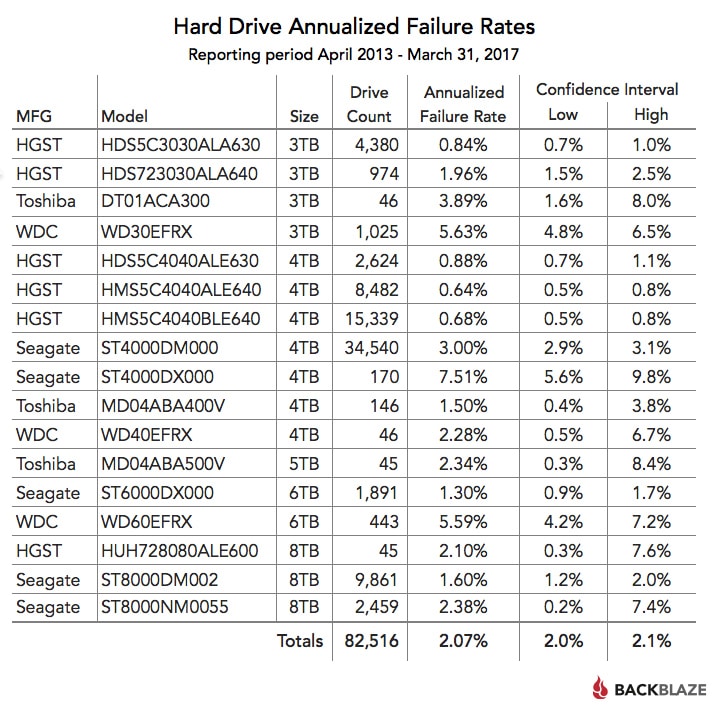
Backblaze has released its latest HDD reliability results, the results are for the first quarter of 2017. This time Backblaze is looking at over 80,000 HDDs, increasing it from the previous 70,000. And a new addition to the testing is enterprise HDDs, (we covered the importance of the different drive types here).
The setup/testing environment is still the same as we mentioned last time: Since 2007 Backblaze has been offering an online backup service. For the backup service Backblaze uses storage pods that holds at least 45 HDDs (the newer pods hold 60 HDDs). They put 20 storage pods together to make a storage vault that can hold up to 1,200 HDDs. Backblaze uses hard drives from primarily four main vendors: Seagate, WD, HGST, and Toshiba. The reason for choosing these companies comes from being able to buy the quantity needed for the price that enables Backblaze to offer customers the best deal. Backblaze also states that the reason most of the drives they use are Seagate and HGST is due to the availability of purchasing the quantity needed at the right price.
As with the last time we looked at it, the annualized failure rate (annualized failure rate is computed by ((Failures)/(Drive Days/365)) * 100) has crept up slightly again, this time to 2.07%, or just over 1,700 drive failures out of over 82,000. Again Seagate has the highest annualized failure rate of a single drive, ST4000DX000, though it was 7.51% this go round versus the nearly 20% we saw in the same model number last time we looked at the results. The drive with the least amount of annualized failure was the HGST HMS5C4040ALE640 with just 0.64%. Failure in this study is defined as 1) The drive will not spin up or connect to the OS. 2) The drive will not sync, or stay synced, in a RAID Array. 3) The Smart Stats used show values above Backblaze’s thresholds.
Backblaze has introduced enterprise drives into the study in the way of 2,459 Seagate 8 TB drives, model: ST8000NM055. As stated above, the drives purchased need to fall within Backblaze’s budget. As Seagate introduced new models of their enterprise drives, the older ones dropped in price and Backblaze seized this opportunity. Of the enterprise drives only two failed but due to the lower number to begin with they do have a higher failure rate percentage (2.38% compared to the non-enterprise 8TB drives with 1.6%). Backblaze also found that the enterprise drives load data faster though they use more power (there is an option to save power on the Seagate drives, PowerChoice, that even while on, the drive stored 40% more data then their client counterparts).
The entire study is available at Backblaze’s site for more insights on which drives performed well as well as the amount of time the drives ran in their data centers.
Backblaze Hard Drive Reliability results
Sign up for the StorageReview newsletter


